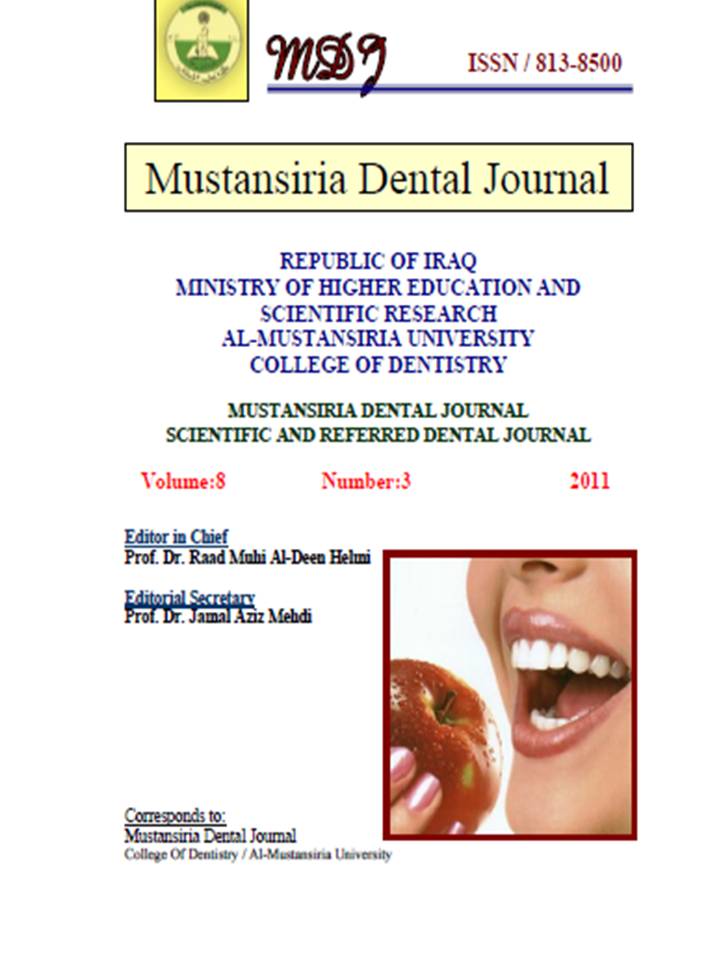The relationship between the severity of gingival inflammation and the concentration of the gingival fluid proteins
DOI:
https://doi.org/10.32828/mdj.v8i3.352Abstract
The gingival fluid flow occur when the gingival tissue and vessels are irritated. In
a chronically inflamed gingiva the blood-tissue barrier is no longer intact, an
increased permeability exists which permits a leakage of plasma protein into the
intervascular tissue, the affected blood vessels exhibits qualitative changes of the
vascular wall these include the formation of non selective fenestrations which permit
exudation of the whole plasma proteins. Most of these proteins are involved in the
mechanisms initiating and controlling the inflammatory response.
The aims of this study is to provide information about some aspect of proteins in
the gingival fluid during inflammation .Seven plasma proteins of different molecular
weight chosen for assay: Haptoglobine, alpha-1 glycoprotien, orosomucoid,
prealbumin, alpha-1 antitrypsin, IgG, IgA and IgM.
Thirty subjects selected for investigation, the gingival fluid collected by
micropipettes from the gingiva adjacent to the upper anterior teeth, clinical
assessment of the gingival condition made according to the gingival index GI of Loe
and Silness then the patients divided into three groups. Concentration of the proteins
determined by using laser nephelometry.
Demonstrate a remarkable difference in the rate of gingival fluid flow with higher
flow rate in cases with chronically inflamed gingiva, the concentration of the proteins
increase with the severity of the gingival inflammation . In conclusion the
concentration of the proteins are not related to their molecular weight and lasernephelometry
seems to be a reliable technique for screening studies of gingival fluid
proteins.

Downloads
Published
Issue
Section
License
The Journal of Mustansiria Dental Journal is an open-access journal that all contents are free of charge. Articles of this journal are licensed under the terms of the Creative Commons Attribution International Public License CC-BY 4.0 (https://creativecommons.org/licenses/by/4.0/legalcode) that licensees are unrestrictly allowed to search, download, share, distribute, print, or link to the full texts of the articles, crawl them for indexing and reproduce any medium of the articles provided that they give the author(s) proper credits (citation). The journal allows the author(s) to retain the copyright of their published article.
Creative Commons-Attribution (BY)








